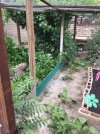Kylee L.
Well-Known Member
They actually deliver the tank lol But I think I'm going to do a solid base and wood plank sides, I can attach the top to the sides much easier as well. Thank you for all your help. I'd be lost without this group, sometimes.The stock tank has to be lifted all at once, though. You can move cinder blocks one or two at a time so all the weight of the enclosure is not being lifted all at once. A 3' x 8' stock tank will be a bit unwieldy to move unless you have a helper.

